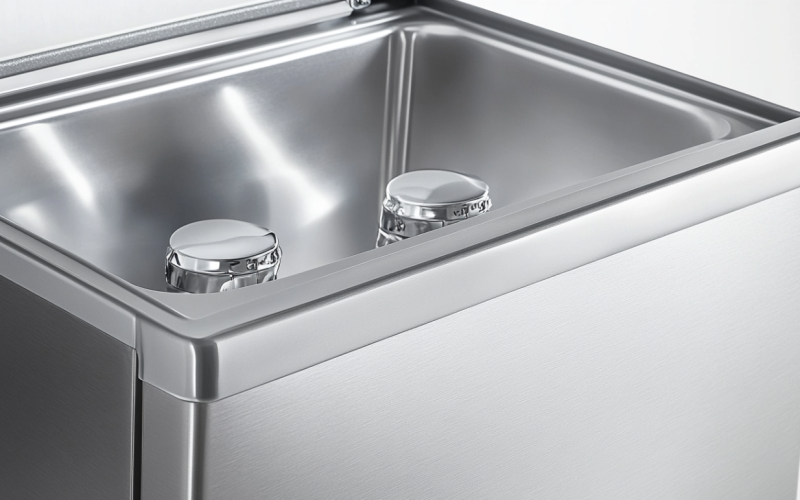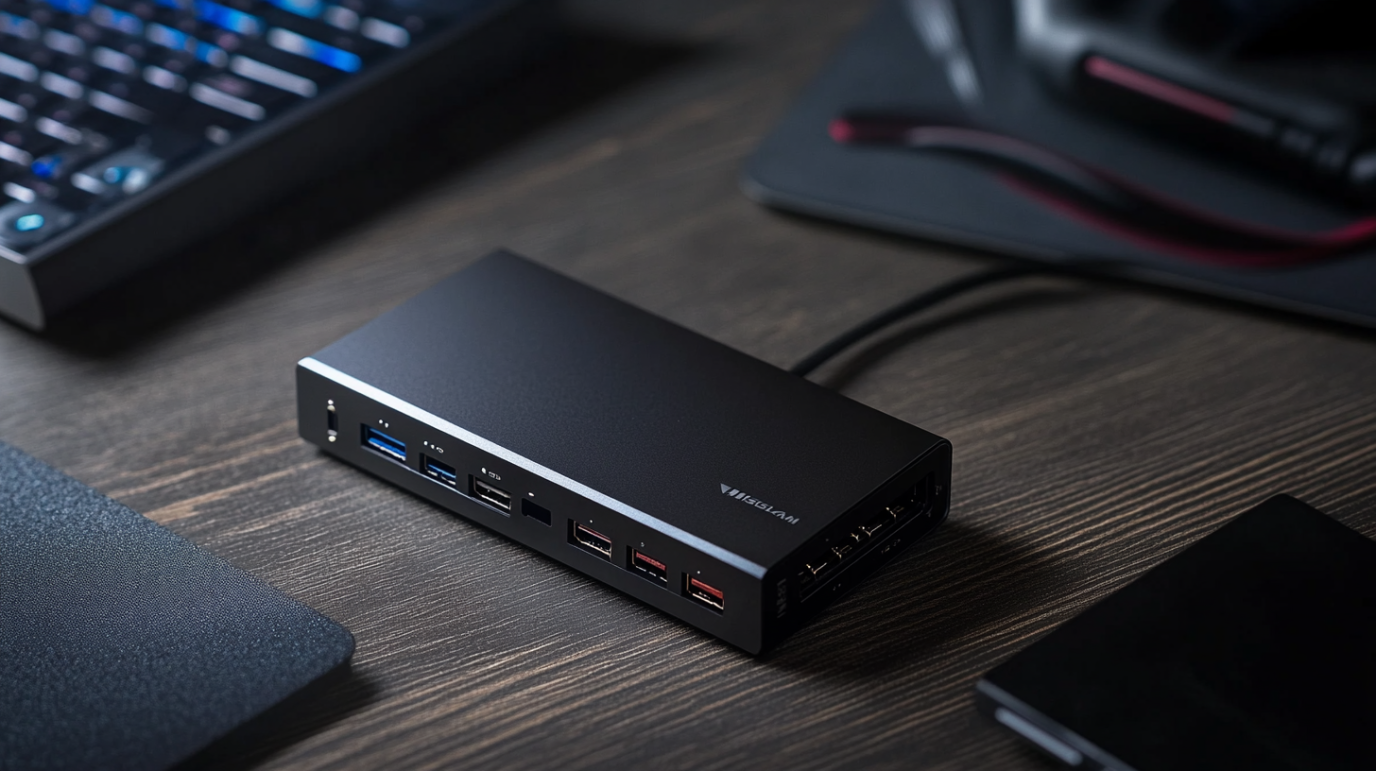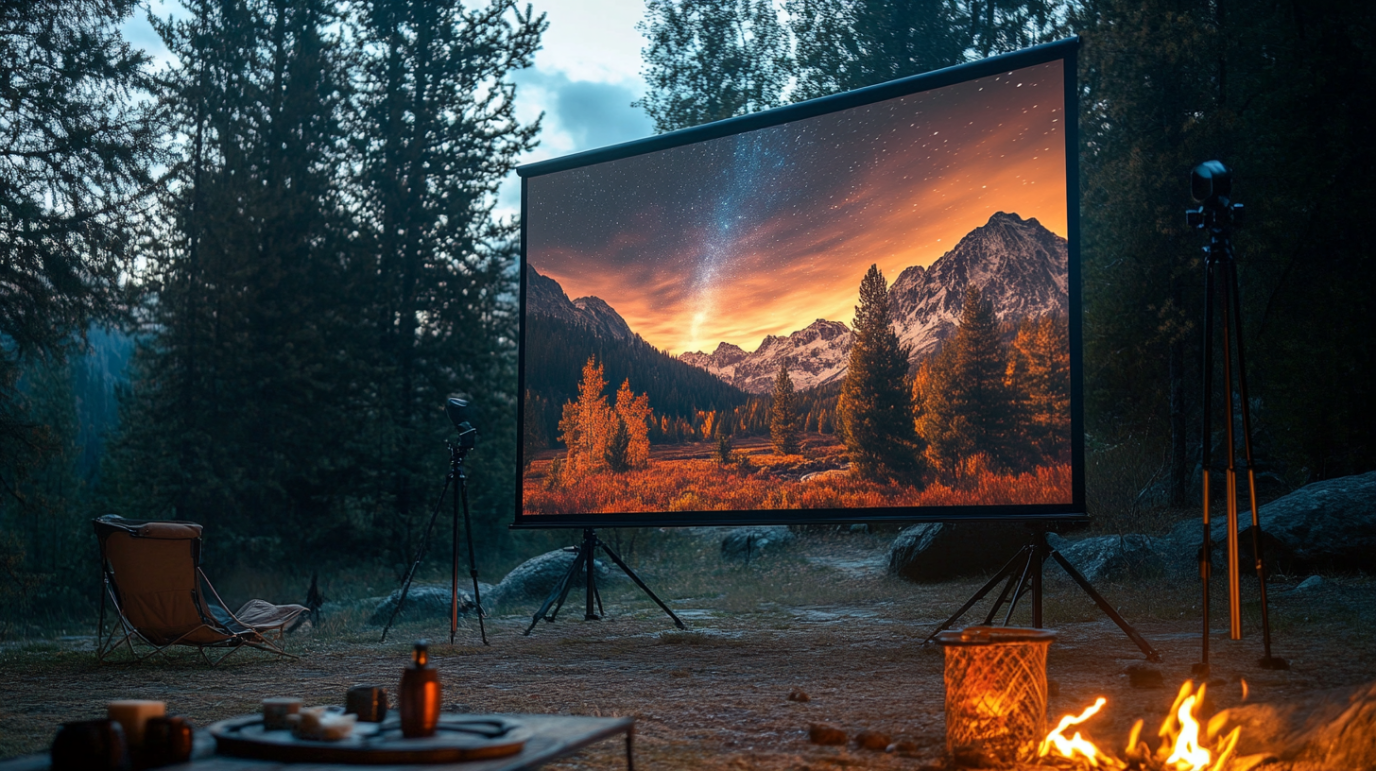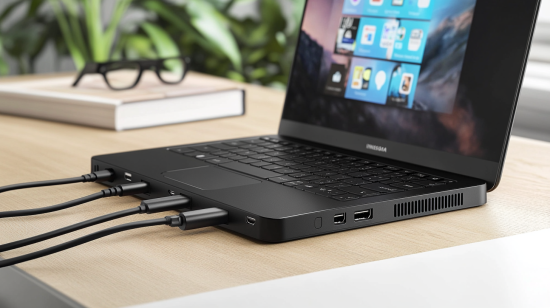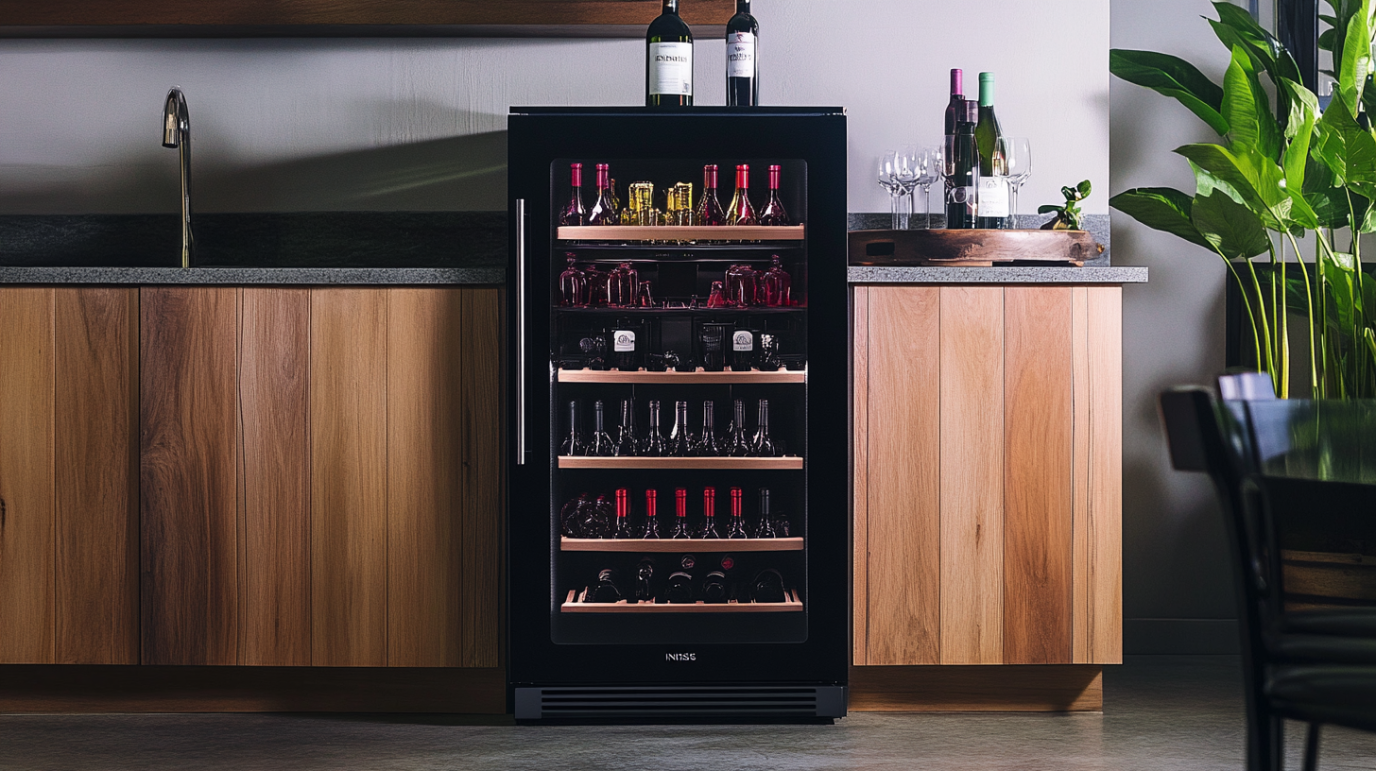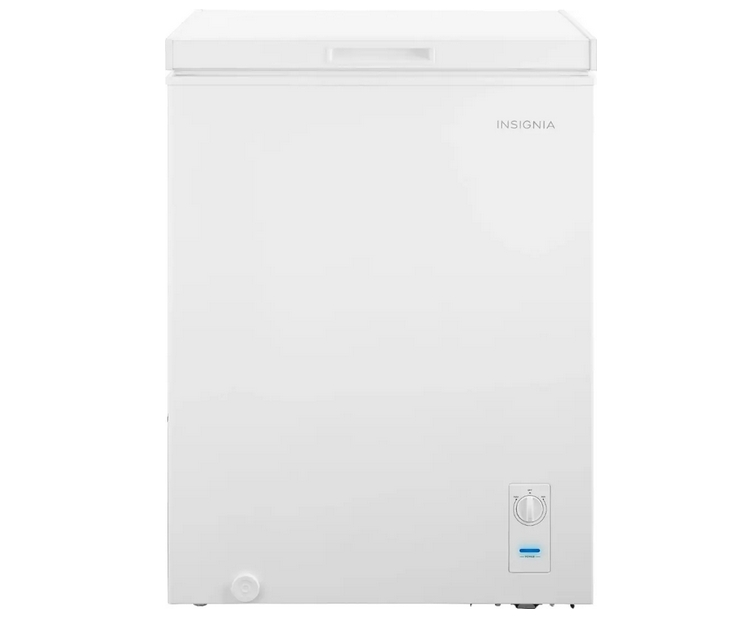
Insignia™ – 5.0 Cu. Ft. Garage Ready-Chest Freezer – White
- 5 cu. ft. storage capacity
- Gives you plenty of storage space for meat, frozen meals, treats and more.
- Garage-ready
- Works in temperatures from 0° to 110° F.
- Removable wire storage basket
- Provides and extra layer of storage space that slides or lifts out of the way when arranging items.
- Defrost drain
- While defrosting, the chest freezer routes the melted ice inside your freezer toward the drain for easy cleanup.
- Included ice shovel
- Helps you to remove ice build up from the freezer.
- Mechanical temperature knob
- The easy-to-use control knob lets you adjust the temperature from about 10°F to -10°F.
- Interior light
- Lets you easily view your items, even in dim lighting.
- Power-on indicator light
- Reassures you that your food is frozen and safe.
$199.99
How This Compact Powerhouse Changed My Home Storage Game Forever
It was a regular Tuesday afternoon when I found myself staring helplessly at my overstuffed refrigerator freezer, playing a precarious game of frozen food Tetris. Between the weekly meal prep containers, discount meat I’d snagged on sale, and the embarrassing collection of frozen pizzas (don’t judge), something had to give. That moment of frustration led me down a rabbit hole that eventually transformed how I shop, cook, and save money. The Insignia 5 Cu. Ft. Chest Freezer became the unexpected hero in my kitchen saga – a purchase I initially questioned but now consider essential.
If you’re on the fence about adding a chest freezer to your home, or specifically considering the Insignia 5 Cu. Ft. model, pull up a chair. I’m about to walk you through everything I’ve learned about this affordable powerhouse after living with it for over a year. From practical considerations to surprising benefits, this comprehensive guide will help you decide if this freezer deserves a spot in your home.
What Exactly Is the Insignia 5 Cu. Ft. Chest Freezer?
Before diving into specifics, let’s clarify what we’re talking about. The Insignia 5 Cu. Ft. Chest Freezer is a standalone freezer unit manufactured by Insignia, Best Buy’s in-house brand. Unlike your standard refrigerator-freezer combo, this is a dedicated horizontal freezer designed specifically for long-term frozen food storage.
If you’re new to the chest freezer world, think of it as a treasure chest for your frozen goods. The top-opening design might seem old-school compared to upright freezers, but there’s brilliant practicality behind this traditional approach – cold air sinks, meaning less escapes when you open the lid compared to a vertical door.
At 5 cubic feet, this model hits a sweet spot between compact apartment-friendly freezers and massive basement behemoths. It’s substantial enough to significantly expand your frozen storage without requiring a dedicated room.
The Price Point: Is It Worth Your Hard-Earned Cash?
Let’s talk money – usually the deciding factor in any appliance purchase. The Insignia 5 Cu. Ft. Chest Freezer typically retails between $149-$199, positioning it as one of the more affordable options in its size category. I’ve seen it drop as low as $129 during major sale events like Black Friday and holiday promotions.
The value proposition becomes even clearer when you consider the food waste reduction potential. Before my chest freezer days, I was throwing away approximately $30-40 worth of food monthly – produce that wilted before I could use it, leftovers forgotten in the back of the fridge, meat that I couldn’t freeze properly due to space constraints. Within about six months, my freezer had essentially paid for itself through prevented waste alone.
Additionally, the ability to stock up during sales has dramatically reduced my grocery bills. When chicken breasts hit $1.99/lb instead of the usual $3.99/lb, I can buy 15 pounds instead of just what fits in my regular freezer. These savings add up substantially over time.
Where to Purchase: Finding the Best Deal
Since Insignia is Best Buy’s house brand, that’s naturally the primary retailer. You’ll find it both in physical Best Buy stores and on their website. However, I’ve occasionally spotted this model on Amazon, though typically at a slight premium.
My recommendation is to monitor Best Buy’s weekly ads and wait for a sale if you’re not in an immediate rush. The price fluctuates throughout the year, with the deepest discounts typically appearing around major shopping holidays. I purchased mine during a Memorial Day sale and saved about $40 off the regular price.
If you’re a member of Best Buy’s rewards program, you might occasionally receive personalized offers that include appliances like this freezer. I’ve also seen open-box units available at significant discounts – just make sure they still carry the full warranty protection.
Feature Breakdown: What Makes This Freezer Tick?
Despite its budget-friendly price point, the Insignia 5 Cu. Ft. Chest Freezer offers a surprisingly robust set of features:
Temperature Control
The adjustable thermostat provides precise control over the internal temperature. I’ve found the sweet spot for most frozen foods to be around -2°F, but you can adjust based on your specific needs. The dial is located externally on most models, making adjustments simple without having to open the unit.
Storage Basket
My model came with a removable wire basket that sits at the top of the freezer interior. This hanging basket is perfect for smaller items that might otherwise sink to the bottom and become lost in the frozen abyss. I use mine for smaller frozen vegetables, ice packs, and individually wrapped portions of ground meat.
Recessed Handle
The built-in recessed handle design makes the lid easy to lift while maintaining a sleek profile. It’s a small detail but makes a big difference in usability, especially when you’re juggling groceries.
Power-On Indicator Light
A simple but useful feature – the external indicator light confirms the unit is running properly. During a recent power outage, this was the first thing I checked when electricity was restored.
Energy Efficiency
While not the most energy-efficient appliance on the market, the Insignia consumes surprisingly little power for its capacity. My electricity bill only increased by about $3-4 per month after adding this to my home.
Manual Defrost Capability
Yes, this model requires manual defrosting (more on that maintenance aspect later), but the process is straightforward, and the interior is designed to make it as painless as possible.
Balanced Hinge
The lid stays open at various angles without slamming shut – a feature I appreciate when loading or unloading multiple items. Safety first!
The Physical Footprint: Will It Fit Your Space?
Let’s talk dimensions – a critical consideration for any appliance purchase. The Insignia 5 Cu. Ft. Chest Freezer measures approximately 33.5 inches wide, 22 inches deep, and 33 inches tall. For visual reference, that’s roughly the size of a large ottoman or small coffee table.
Before purchasing, I strongly recommend measuring your intended space with tape measure in hand. Remember to account for proper ventilation – the unit needs at least 4 inches of clearance on all sides and top for proper airflow. Insufficient ventilation can force the compressor to work harder, reducing efficiency and potentially shortening the freezer’s lifespan.
Weight-wise, expect about 75 pounds when empty – not terribly heavy but substantial enough that you’ll want help moving it. Once filled with food, it becomes significantly heavier, so choose your location carefully before loading it up.
In my case, I initially placed it in my garage but later relocated it to a utility nook off my kitchen for convenience. The move required emptying the freezer and recruiting a friend to help with the heavy lifting. Plan your location thoughtfully to avoid my mistake!
Storage Capacity: How Much Can You Actually Fit?
The “5 cubic feet” specification sounds abstract until you translate it into practical terms. After a year of use, here’s my real-world assessment of what this freezer can hold:
- Approximately 175-200 pounds of food
- Roughly 20-25 grocery bags of frozen items
- About 16-18 gallons of ice cream (not that I’ve tested this specifically…)
- 40-50 TV dinners or similar boxed frozen meals
- 8-10 large family-sized casseroles in standard 9×13 baking dishes
For my household of two adults, this provides enough additional freezer space to:
- Buy meat in bulk when on sale
- Freeze seasonal produce at peak freshness
- Store 2-3 months worth of meal prep containers
- Keep a reasonable emergency food supply
- Maintain a decent ice cream selection (priorities!)
For larger families, this might serve as supplemental rather than primary freezer storage, but for singles, couples, or small households, the capacity is remarkably generous.
Energy Efficiency: Impact on Your Utility Bill
One of my initial concerns was the potential impact on my electricity bill. The Insignia 5 Cu. Ft. Chest Freezer carries an Energy Star rating and uses approximately 218 kWh per year under normal operating conditions.
Translated to dollars and cents, this works out to roughly $25-40 annually in additional electricity costs, depending on your local rates. My personal experience aligns with these estimates – I’ve seen an increase of about $2-4 per month on my utility bill since adding the freezer.
Several factors affect energy consumption:
- Ambient temperature (garage placement in extreme climates can increase usage)
- Frequency of opening the lid
- How full you keep the freezer (fuller freezers generally require less energy)
- Proper maintenance and defrosting schedule
To maximize efficiency, I’ve found that keeping the freezer at least 70% full creates thermal mass that helps maintain temperature. When my stock is low, I fill empty milk jugs with water and freeze them to maintain efficiency and provide emergency water if needed.
The Defrosting Question: Is Manual Defrosting a Deal-Breaker?
Let’s address the elephant in the room – this Insignia model requires manual defrosting, which initially gave me pause. After living with it, I can confirm it’s less daunting than it sounds.
The freezer needs defrosting when frost buildup reaches about 1/4 inch thickness, which for me happens approximately every 6-8 months. The process takes about 3-4 hours from start to finish:
- Empty the freezer (I use coolers with ice packs)
- Unplug and leave the lid open
- Place towels around the base to catch water
- Use a plastic scraper (never metal!) to gently remove large ice chunks once softened
- Wipe down interior with mild cleaner
- Plug back in and allow to cool before reloading
While auto-defrost would be convenient, manual defrosting has advantages. Auto-defrost models typically use more energy and can subject foods to slight temperature fluctuations that may affect quality. The manual process also forces me to inventory my freezer regularly and prevent forgotten items.
Cleaning and Maintenance: Keeping It Running Smoothly
Beyond defrosting, general maintenance is straightforward. I wipe down the exterior with a damp cloth and mild cleaner monthly. The lid gasket (the rubber seal) gets special attention – keeping it clean ensures a proper seal and maximum efficiency.
The condensation drain at the bottom of the unit occasionally needs clearing. A simple flush with warm water and a pipe cleaner every few months prevents clogging and potential water leakage issues.
I’ve also found it helpful to periodically check the power cord for any damage and ensure the unit remains level. An unlevel freezer can cause the door to seal improperly and strain the hinge mechanism.
Temperature Control: Finding the Perfect Setting
The external temperature dial offers settings typically numbered from 1-7, with higher numbers representing colder temperatures. Through trial and error, I’ve found setting 4-5 maintains an ideal temperature between 0°F and -10°F for most frozen foods.
For testing, I purchased an inexpensive freezer thermometer that lives inside the unit. This has been invaluable for confirming the actual temperature, especially during summer months when my garage heats up.
The FDA recommends keeping frozen foods at 0°F or below for maximum safety and quality. At this temperature, food remains safe indefinitely, though quality may deteriorate over time. I’ve found the Insignia maintains this temperature consistently, even during hot summer months.
Garage-Worthy? Using Your Freezer in Unconditioned Spaces
One of the most common questions about any freezer is whether it can function properly in a garage or similar unconditioned space. The Insignia 5 Cu. Ft. Chest Freezer is rated for operation in ambient temperatures from 32°F to 110°F.
My own experience with garage placement has been mixed. During moderate weather, it performed flawlessly. However, during an extreme summer heat wave (ambient temperatures above 100°F), I noticed increased energy consumption and the compressor running more frequently.
In very cold environments, the situation gets trickier. When ambient temperatures drop below freezing, the freezer’s thermostat may become confused – it doesn’t sense a need to run the compressor since the surrounding air is already cold. This can potentially allow the internal temperature to rise above optimal levels for food storage.
If garage placement is your plan, consider:
- Installing a garage heater for winter months if temperatures regularly drop below freezing
- Using a temperature alarm to alert you to problematic fluctuations
- Relocating to a temperature-controlled space during extreme weather if possible
Noise Level: Will It Drive You Crazy?
The operating noise level of any appliance can make or break your satisfaction, especially in smaller living spaces. The Insignia 5 Cu. Ft. Chest Freezer produces approximately 42 decibels during normal operation – about the volume of a quiet library or soft rainfall.
In practical terms, you’ll notice a gentle hum when the compressor cycles on, but it’s unlikely to disturb conversations or sleep unless you’re extremely sensitive to noise. The compressor typically runs for 15-20 minutes, followed by 30-40 minutes of silence in a repeating cycle.
My freezer lives about 15 feet from my living room, and I rarely notice its operation unless the house is completely silent. Compared to my refrigerator, it’s actually quieter and less disruptive.
Color and Aesthetic Options: Will It Match Your Space?
The Insignia 5 Cu. Ft. Chest Freezer comes primarily in classic white, which maintains a clean, utilitarian appearance. Occasionally, I’ve seen limited runs in black or stainless steel finish, though these tend to command higher prices.
The white finish has practical advantages beyond initial cost savings. It:
- Shows dust less obviously than black models
- Resists showing fingerprints and smudges
- Reflects rather than absorbs heat, potentially improving efficiency
- Matches most appliances for a cohesive look
If aesthetics are a significant concern, some owners (myself included) have found creative solutions. I used removable contact paper in a wood grain pattern to help the freezer blend with my other furniture when it was in a visible location. Others have used appliance paint for a more permanent customization.
Safety Features: Protecting Curious Kids and Valuable Contents
Safety considerations become particularly important for households with young children. The Insignia model doesn’t come with a built-in lock, which might be a drawback for some families.
As a workaround, I purchased an inexpensive freezer lock that wraps around the unit and prevents unauthorized access. This aftermarket solution cost under $15 and provides peace of mind without permanent modification to the freezer.
Beyond physical security, the unit lacks an alarm system to alert you to temperature rises or power failures. I’ve supplemented with a separate freezer alarm that sounds when temperatures rise above a set threshold – essential protection for valuable frozen goods.
The recessed handle design does provide some passive safety by making it slightly more difficult for very young children to open the lid compared to projecting handle designs.
Competitive Landscape: How Does It Stack Up?
The chest freezer market is surprisingly competitive, with numerous options at various price points. Having researched extensively before my purchase, here’s how the Insignia 5 Cu. Ft. model compares to similar options:
Insignia vs. GE 5.0 Cu. Ft. Chest Freezer:
The GE typically costs $30-50 more but offers nearly identical features. The main differences are slightly quieter operation from the GE and marginally better energy efficiency. Otherwise, the performance is remarkably similar.
Insignia vs. Frigidaire 5.0 Cu. Ft. Chest Freezer:
Frigidaire’s comparable model usually commands a $40-70 premium and includes a power-on indicator light that’s easier to see. Some users report slightly more consistent temperature maintenance, but the practical differences are minimal for everyday use.
Insignia vs. Magic Chef 5.0 Cu. Ft. Chest Freezer:
Priced similarly to the Insignia, the Magic Chef offers nearly identical features. The main distinction is the internal light available in some Magic Chef models – convenient but not essential.
Insignia vs. Midea 5.0 Cu. Ft. Chest Freezer:
The Midea often sells for slightly less than the Insignia but with similar specifications. The build quality of the Insignia feels marginally more substantial in my hands-on comparison.
For the value-conscious consumer, the Insignia strikes an excellent balance between affordability and functionality. The primary compromises compared to premium models are the manual defrost requirement and slightly higher noise levels.
Warranty and Support: What If Something Goes Wrong?
The Insignia 5 Cu. Ft. Chest Freezer comes with a standard one-year limited warranty covering defects in materials and workmanship. This is fairly typical for the price range, though some premium brands offer longer coverage.
My experience with Best Buy’s customer service has been positive. When I had a question about unusual noise shortly after purchase, their support team was knowledgeable and responsive. The issue turned out to be normal operation, but I appreciated their thorough troubleshooting approach.
For additional peace of mind, Best Buy typically offers extended warranty plans at purchase. I declined this option but understand its appeal, especially if the freezer will be in a high-stress environment like an uncontrolled garage or if you’re storing particularly valuable items.
User Reviews: What Do Other Owners Think?
Before purchasing, I combed through hundreds of reviews across multiple platforms. The consensus was generally positive, with the Insignia receiving an average rating of approximately 4.2/5 stars.
Common praise points included:
- Excellent value for the price
- Surprisingly spacious interior
- Quiet operation compared to expectations
- Consistent temperature maintenance
- Simple but effective design
Recurring criticisms centered on:
- Manual defrost requirement
- Occasional issues with lid alignment
- Limited warranty period
- Basic feature set compared to premium models
- Questions about long-term durability
After my extended use, I find myself aligning with the majority opinion. The freezer isn’t perfect, but it delivers remarkable performance for its price point and represents an excellent value for most households.
Mobility and Relocation: Can You Take It With You?
Unlike built-in appliances, chest freezers offer flexibility in placement. However, moving a freezer requires some planning. The Insignia weighs approximately 75 pounds empty, making it manageable for two people to relocate.
When I moved mine from the garage to a utility area, I found these steps essential:
- Empty all contents (use the opportunity to inventory and organize)
- Unplug and allow 24 hours for complete defrosting
- Secure the lid with tape during transport
- Keep the freezer upright during moving (tilting can damage the cooling system)
- Allow 4-6 hours in the upright position before plugging in at the new location
The compact dimensions made it relatively easy to maneuver through standard doorways. If stairs are involved, professional movers might be worth considering for safety.
Promotions and Discounts: Getting the Best Deal
Timing your purchase can save substantial money. Based on my observation of pricing patterns, the best times to buy include:
- Major holiday sales (Memorial Day, Labor Day, Black Friday)
- End of winter/early spring (February-March)
- End of fiscal quarters when retailers may offer incentives to meet sales targets
- Best Buy’s periodic appliance sales (typically advertised in their weekly flyers)
When I purchased mine, I combined a Memorial Day sale with a 10% off coupon for signing up for Best Buy’s credit card, bringing the final price down to approximately $125 – a significant discount from the regular $179 price tag.
Beyond timing, look for:
- Open-box discounts (floor models or returns, often 10-20% off)
- Bundle deals when purchasing multiple appliances
- Rebates for energy-efficient appliances (varies by location)
- Price matching if you find the same model cheaper elsewhere
Start-Up Time: From Plugging In to Freezing
When first setting up your Insignia freezer, patience is necessary. After plugging in, the unit takes approximately 4 hours to reach 32°F and 8-12 hours to reach optimal freezing temperature (0°F or below).
I made the rookie mistake of loading mine too quickly after setup, resulting in some partially thawed items. The instruction manual recommends running the empty freezer for 24 hours before loading, which in retrospect was wise advice.
For the most efficient start-up:
- Position in final location with proper clearance
- Set temperature dial to medium-high (5-6)
- Allow to run empty for at least 12-24 hours
- Load items gradually, starting with pre-frozen goods
- Adjust temperature setting as needed once fully loaded
The compressor will run almost continuously during initial cool-down, which is normal. After reaching target temperature, it shifts to a more typical cycle pattern.
Organization Strategies: Maximizing Your Freezer Space
With 5 cubic feet of essentially open space, organization becomes essential to prevent the dreaded “freezer archaeology” – digging through layers of frozen items to find what you need. Through trial and error, I’ve developed a system that works well:
- Use the hanging basket for small items – The included wire basket keeps frequently used small items accessible without digging.
- Invest in uniform containers – I use same-sized rectangular containers that stack efficiently and maximize space utilization.
- Color-code by category – Different colored bins for different food types (red for meat, green for vegetables, etc.) make visual identification simple.
- Create a freezer inventory – I maintain a magnetic whiteboard on the freezer listing contents and dates. Updating it when adding or removing items prevents forgotten food.
- Practice FIFO (First In, First Out) – Oldest items stay on top where they’re more likely to be used first.
- Pre-portion before freezing – I divide large packages of meat into meal-sized portions before freezing for easier thawing and use.
- Remove unnecessary packaging – Commercial packaging often wastes space. I transfer items to vacuum-sealed bags or containers when possible.
This organization system transformed my freezer from a chaotic frozen cave to an efficient storage system where I can locate any item in seconds.
Real-Life Impact: How This Freezer Changed My Habits
Beyond the practical specifications, what difference has this freezer actually made in my daily life? Several significant changes emerged after adding this appliance to my home:
Grocery Shopping Transformation
My shopping patterns shifted dramatically. Instead of weekly full grocery trips, I now make targeted bulk purchases when items are on sale. Meat prices can vary by 50% or more between regular and sale prices – with storage capacity, I stock up exclusively during sales.
Reduced Food Waste
Before the chest freezer, about 20% of my fresh produce would spoil before use. Now, I freeze berries, sliced peppers, and other items approaching their prime, reducing my waste to almost zero.
Meal Prep Revolution
Weekend meal preparation became much more efficient. I can prepare 20-30 meals in one cooking session, properly freeze them, and enjoy home-cooked convenience for weeks afterward.
Emergency Preparedness
The additional storage provides peace of mind during potential emergencies. When a major storm was forecast last winter, I didn’t join the panic-buying crowds – my freezer already contained several weeks of food.
Seasonal Preservation
I’ve discovered the joy of preserving seasonal abundance. Last summer’s farmers’ market peaches became mid-winter desserts, and the height-of-season tomatoes were transformed into sauce that tasted garden-fresh months later.
The Verdict: Is The Insignia 5 Cu. Ft. Chest Freezer Right For You?
After more than a year with this freezer, I can confidently say it represents exceptional value for most households. It strikes an excellent balance between capacity, cost, and features without unnecessary bells and whistles that drive up prices.
You’ll likely love this freezer if:
- You’re seeking to expand frozen storage on a modest budget
- You have space constraints that prevent larger models
- You value simplicity and reliability over advanced features
- You’re looking to reduce food waste and grocery bills
- You enjoy bulk cooking or preserving seasonal produce
You might want to consider alternatives if:
- You absolutely require auto-defrost capability
- You need built-in security features like locks
- You have mobility issues that make a chest-style freezer difficult to use
- You’re seeking the absolute quietest operation possible
- You need a freezer rated for extreme environmental conditions
For my money, the Insignia 5 Cu. Ft. Chest Freezer has proven one of my most practical and economically beneficial home purchases. The initial investment has been repaid multiple times through food savings, waste reduction, and the convenience of having properly stored frozen goods always at hand.
What began as a solution to an overstuffed refrigerator freezer has evolved into a transformative tool that’s changed how I cook, shop, and eat. If you’re on the fence about adding a chest freezer to your home, the Insignia 5 Cu. Ft. model offers an excellent entry point with minimal financial risk and significant potential rewards.
Your freezer journey might look different from mine, but the fundamental benefits remain: more storage, greater flexibility, reduced waste, and the satisfaction of taking control of your food supply. Whether you’re a bargain hunter, meal prepper, bulk buyer, or simply someone who wants more freezer space without breaking the bank, this unassuming appliance might just become your kitchen MVP – just as it has become mine.

